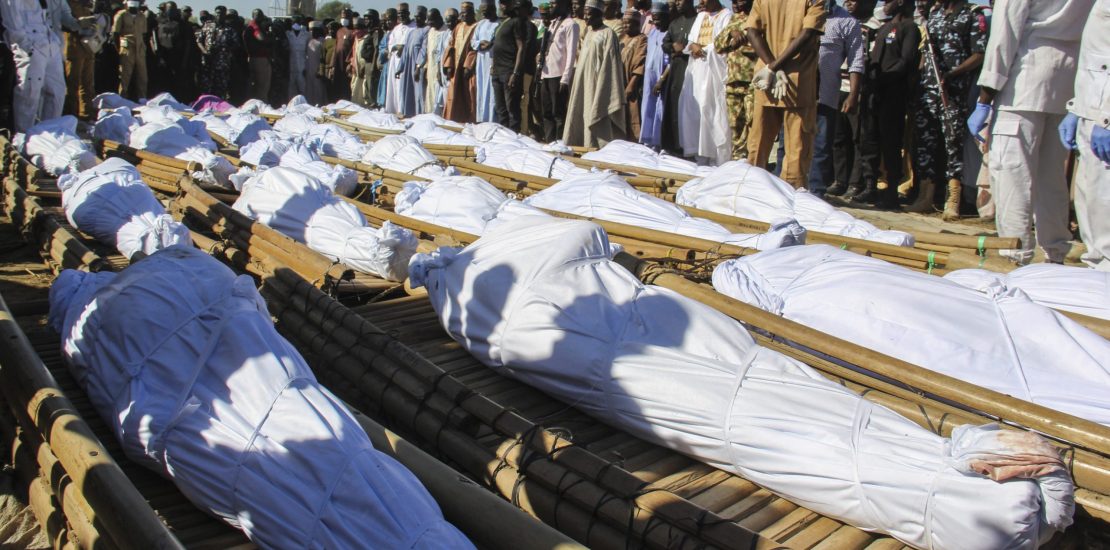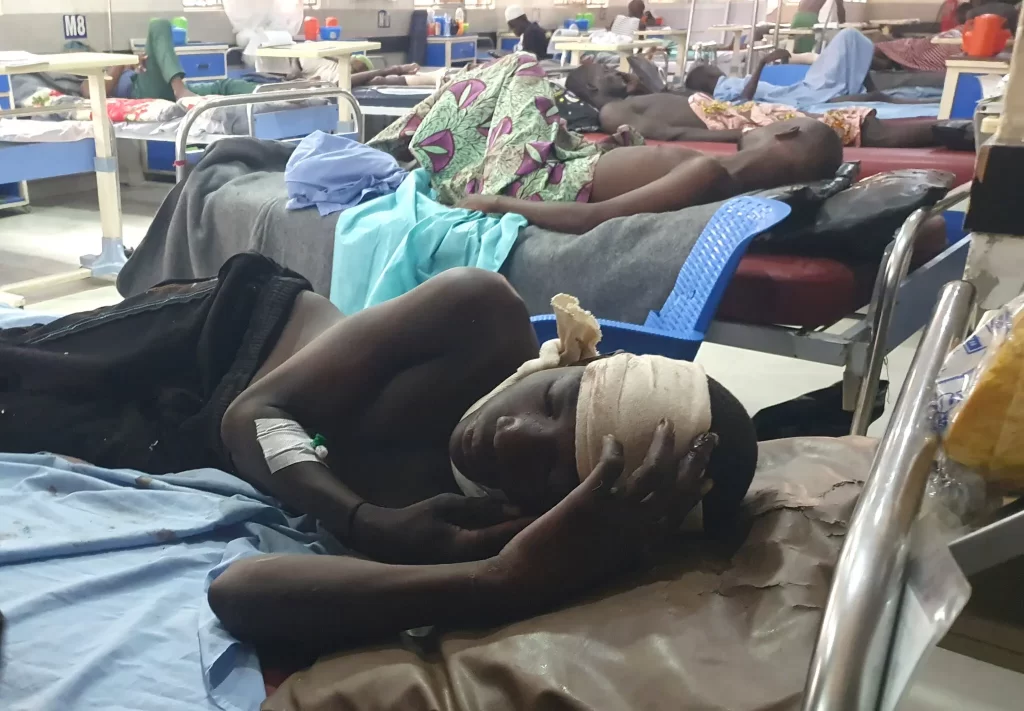- August 21, 2025
- Posted by: Hub Admin
- Categories: Accountability, Article, Conflict Resolution, Human Rights, Legal Aid, Peace-building, Public Interest

By Nsikak Effiong
Introduction
The world has continued to witness an upsurge in terrorist attacks, and this is rampant, especially in developing countries, due to the scale and impact on their citizens. The atrocities and mayhem unleashed on hapless civilians and the devastating after-effects should inform a better and more effective approach to combating terrorism and limiting its spread. The foundation of a democratic society is underpinned by respect and value for human rights, its institutions, and the machinery for reprieve where these rights are infringed upon. Acts of terrorism are an assault on these institutions, an attempt to create chaos and instil fear in the populace to destabilise the existing system and create one that thrives on abuse, lack of accountability, and unfettered power. In the midst of this, we often forget the victims of these attacks, whose voices, if amplified and taken into consideration, can lead to a better understanding of the impact and better ways to address and mitigate their toll.

What Constitutes Terrorism?
There is still no consensus on the appropriate definition of terrorism. This has been attributed to the fact that the term has become politically and emotionally charged.[1] It has been defined as the use of violence against non-combatants to achieve political or ideological aims.[2] The United Nations General Assembly condemned terrorist acts by using the following political description of terrorism in December 1994:
Criminal acts intended or calculated to provoke a state of terror in the general public, a group of persons or particular persons for political purposes are in any circumstance unjustifiable, whatever the considerations of a political, philosophical, ideological, racial, ethnic, religious or any other nature that may be invoked to justify them.[3]
Terrorism connotes violent or malicious acts aimed at instilling fear in furtherance of an ideology or political motive. The victims of most terror attacks are the civilian population, who are most times the target of these vicious acts.
Acts of Terrorism and Its Impact
The Global Terrorism Index is a comprehensive study analysing the impact of terrorism for 163 countries covering 99.7 per cent of the world’s population. Its 2025 report noted the following trends:[4]
- The Sahel region remains terrorism’s epicentre, accounting for over half of all global terrorism deaths.
- Islamic State (IS)expands its operations to 22 countries and remains the deadliest organisation, causing 1,805 deaths, with 71% of its activity being in Syria and the DRC.
- Tehrik-e-Taliban (TTP) emerged as the fastest-growing terrorist group, with a 90% increase in attributed deaths.
- Deaths in sub-Saharan Africa (excluding the Sahel) are now at their lowest since 2016, dropping by 10%
- Terrorist attacks jumped by 63% in the West, and Europewas most affected, where attacks doubled to 67
- Seven Western countriesare among the first 50 most impacted countries on the Global Terrorism Index
- Antisemitic and Islamophobic hate surged globally, with the US seeing a 200% rise in antisemitic incidents in 2024. Attacks are more deadly as the number of terrorist incidents fell by 22% to 3,350, and the number of countries reporting an incident fell to 50.
In its overall terrorism index score, a composite measure made up of four indicators: incidents, fatalities, injuries, and hostages, Nigeria was ranked 6th out of 163 countries. Nigeria has witnessed several incidents of terrorism, and at times, most of these cases are unreported. The impact of terrorism is enormous. It has been noted that the global economic impact of terrorism reached US$52 billion in 2017.[5] The total economic cost of terrorism in Africa from 2007 to 2016 is at a minimum of US$119 billion. Nigeria’s cost, at US$97 billion, was over 22,000 times greater than that of Burkina Faso, which has suffered the lowest total absolute economic impact of the 18 focus countries. Nigeria’s impact is also almost 19 times greater than that of Libya, which has had the second-highest cost of terrorism over the ten-year period.[6] The total economic impact of refugees and internally displaced people on the origin countries, between 2007 and 2016, was US$312.7 billion.[7]

Mainstreaming Victims into National Discourse on Terrorism
While most discourse focuses on addressing security gaps and tightening loopholes in the system to prevent subsequent terrorist attacks, there is an oversight on its impact on victims and the need for their involvement when crafting policies and legislation to address terrorist incidents. In addition to security measures to prevent future attacks, there is a need to cater to the needs of victims by providing not only financial and psychological support, but also putting them at the forefront of policy measures and ensuring that their rights and needs are placed at the centre of counter-terrorism efforts. Terrorist attacks result in a large evacuation of persons in those communities, leading to internal displacement. Whilst terrorist activity is not the sole cause of forcible population displacement, it has been found that terrorism is inextricably linked to armed conflict and political terror,[1] all three of which are key determining factors of population displacement. Most of these victims, especially women, children and survivors of sexual and gender based violence, are overlooked and not integrated into the national dialogue on countering terrorism and its effects. There is inadequate social, physical, mental, legal, and financial support provided for victims of terrorism to ensure reintegration into society.[2] There is a general lack of awareness of rights, how to access remedies, and how to access justice. There is a need for an adequate framework that recognises and upholds the rights of victims of terrorism, makes provision for assistance, and supports reparations.[3]
Conclusion
Since the adoption of resolution 72/165 (2017), the UN has commemorated this Day annually to honour the victims of terrorism and reaffirm the importance of upholding their rights. A General Assembly resolution, A/RES/77/298 (2023), calls on Member States to “develop national comprehensive assistance plans and reaffirms the need to support victims of terrorism, especially women, children, and survivors of sexual and gender-based violence”. The theme of this year is inspired by members of the Victims of Terrorism Associations Network (VoTAN), who have shown relentless effort in canvassing for the victims of terrorism, emphasising the need for collective support in bringing victims together to offer mutual support, raise awareness, and influence policies.
Recommendations
- Policy Inclusion: Governments should adopt policies that explicitly recognise victims of terrorism as key stakeholders in national peace and security discussions.
- Representation in Dialogue Platforms: Victims and survivors should be included as participants and speakers in national dialogues, peace conferences, and reconciliation processes.
- Victim-Centred Frameworks: Ensuring that national counter-terrorism strategies integrate victim-centred approaches, prioritising their voices, experiences, and needs.
- Capacity Building: Providing victims with training, psychosocial support, and advocacy skills to enable meaningful participation in policy and dialogue processes
- Legal Recognition & Protection: Enacting or strengthening laws that guarantee victims’ rights, including access to justice, reparations, and protection from stigma or retaliation.
- Media Amplification: Media coverage that highlights victims’ perspectives and narratives, shifting focus from perpetrators to survivors.
- International Best Practices: Adopting global standards and recommendations from the UN, AU, and other bodies that promote the inclusion of victims in counter-terrorism and peacebuilding.
- Monitoring & Evaluation: Setting up mechanisms to track the extent to which victims’ voices influence policy outcomes and national dialogue initiatives.
References
[1] A. Schmid, “Links Between Terrorism and Migration: An Exploration”, International Centre for Counter-Terrorism Research Paper, May 2016; https://www.icct.nl/wp-content/uploads/2016/05/Alex-P.-Schmid-Links-between-Terrorism-and-Migration-1.pdf
[2] “Gender Victims of Terrorism” (United Nations : Office on Drugs and Crime) <https://www.unodc.org/unodc/en/gender/news/gender-victims-of-terrorism.html?testme> accessed August 20, 2025
[3] Ibid
[1] K N Trapp, ‘The ICJ and International Terrorism’ (2023) 26 Max Planck YB UN Law 534
[2] Boaz Ganor, Global Alert: The Rationality of Modern Islamist Terrorism and the Challenge to the Liberal Democratic World (Columbia University Press 2015) 2–3, 5–6, 14–16.
[3] UNGA Res 49/60 ‘Measures to Eliminate International Terrorism’ (9 December 1994) UN Doc A/RES/49/60, annex (‘Declaration on Measures to Eliminate International Terrorism’).
[4] Vision of Humanity, ‘Global Terrorism Index’ (Vision of Humanity, n.d.) https://www.visionofhumanity.org/maps/global-terrorism-index/#/ accessed 20 August 2025.
[5] United Nations Development Programme, Measuring the Economic Impact of Violent Extremism Leading to Terrorism in Africa (UNDP 2019) https://www.undp.org/sites/g/files/zskgke326/files/publications/undp-rh-addis_Measuring_the_Economic_Impact_of_Violent_Extremism_Leading_to_Terrorism_in_Africa.pdf accessed 20 August 2025.
[6] Ibid
[7] Ibid
